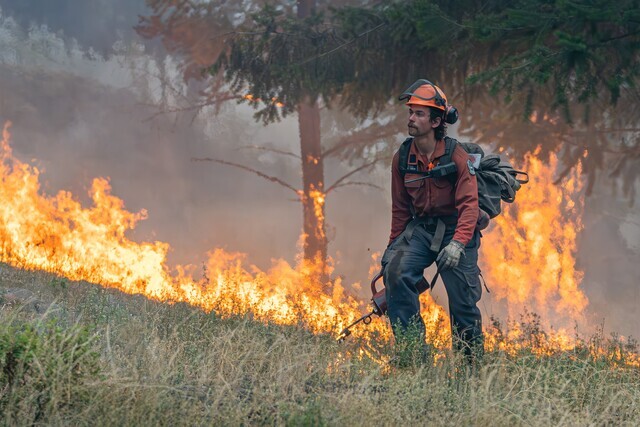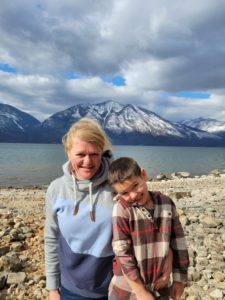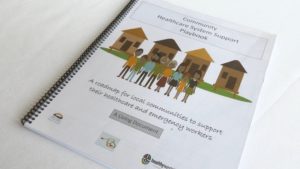Photo: BC Wildfire Service
Michael Potestio – May 23, 2024
B.C. READY FOR WILDFIRE WAR
B.C. Premier David Eby is preparing for war ahead of this year’s wildfire season, with more crews, tech and aircraft than ever before.
“Functionally, at the provincial level, we’re standing up an army between equipment and the frontline wildfire staff fighting those fires,” Eby said during a recent press conference.
Two of the last three summers have been the worst wildfire seasons on record for B.C., and Eby said the province spent $1 billion fighting those forest fires.
He said the province is spending “nine times more than the previous governments” on fire preparation work across B.C. He also noted the BC Wildfire Service is now operational year-long, and more money is being spent on firefighting equipment.
“This is not a cheap enterprise, but safety for our communities when it comes to wildfire is non negotiable,” Eby said.
In an email, BCWS provincial wildfire information officer Erika Berg noted myriad initiatives the province has undertaken to be better prepared for wildfires this year, including using AI to predict wildfires, extending the hiring window for firefighters and spending millions of dollars in more equipment.
AI helping to detect wildfires
B.C. is also introducing technology that can predict wildfire behaviour in real time using information from the field. The technology has been introduced in the Kamloops and Coastal Fire Centres, where it has already been trialled to ensure compatibility with forest and fuel conditions.
Following some more trials, refinements and staff training, B.C.’s remaining four regional fire centres will phase in the new wildfire predictive technology throughout 2024.
“With this expanded level of intelligence, the BC Wildfire Service can even more proactively respond to wildfires, giving people more time to act during an emergency,” the province said in a press release.
Wildfire growth modelling works by using data from weather models, topography and fuel maps. The technology being implemented by BCWS includes the ability to use existing geospatial data and fuel maps, but also uses an app-based interface to allow for on-the-ground inputs in real time.
BCWS applications doubled
The province extended the hiring period for new recruits to a longer, rolling application model over six months and is encouraging applicants to indicate work location preference. According to the province, the changes have resulted in more than 1,700 applications, which is double the number of applications received in 2023.
Meanwhile, following a pilot in the Cariboo Fire Centre, a First Nations bootcamp is also being offered in the Coastal Fire Centre this spring. The BCWS plans to adopt lessons from these bootcamps into its core curriculum.
Bowinn Ma, Minister of Emergency Management and Climate Readiness, said the province has also partnered with the BC Hotel Association to develop an online hotel reservation portal for evacuees, which is meant to help find them accommodation more efficiently via Emergency Support Services.
“No matter what this response season brings, I know we will all rise to the challenge, continue to work together and come out stronger,” Ma told delegates at this year’s Southern Interior Local Government Association convention in Kamloops.
Millions spent on equipment
Nearly $16 million was spent ahead of April to expand BCWS firefighting equipment, including pumps, fire camp equipment, safety gear and medical and hygiene equipment, according to the province. The BCWS is also acquiring two mass water-delivery systems to be used for fire suppression and flood operations.
The wildfire service says it will also upgrade its existing aviation fleet to include additional plane and helicopter agreements, with a focus on “a diverse and modern set of aircraft” suited for B.C.’s vast and challenging terrain.
The BCWS is also continuing to trial night-vision technology used by aviation crews to survey and support fire suppression during nighttime operations. Meanwhile, the province is creating a $21 million equipment depot in Prince George, and a dedicated wildfire training and education centre at Thompson Rivers University.
The province says it is also acquiring more drones and remote cameras to assist in wildfire detection and response and upgrading weather stations to support forecasting fire conditions and outlooks.
FireSmart tweaked, prescribed burns planned
The province has announced a FireSmart Wildfire Resiliency and Training Summit this year in Prince George, aimed at bringing together hundreds of local and municipal firefighters to collaborate and train with the BC Wildfire Service.
The provincial government has also made changes to accessing FireSmart grants. This year, FireSmart BC will offer a one-time recovery uplift up to $100,000 for wildfire affected communities, in addition to wildfire mitigation funding. The FireSmart Community Funding and Supports program has also shifted to allow communities to apply for multi-year funding.
Meanwhile, the province says it is managing more fire fuels than years past. According to a provincial press release, last year the BCWS and Forest Enhancement Society of BC treated approximately 9,500 hectares of land through “a range” of fire fuel management approaches, including prescribed burns, which was 2,000 more hectares than what was treated in 2022.
“The BC Wildfire Service continues to work with partners to ensure more land near communities is treated,” the province said in a press release.
The province says there are 61 prescribed burn projects planned across the province for 2024. Last year 23 prescribed burns were completed.
Eby said the province will continue to encourage residents and communities to engage in FireSmart practices to help minimize wildfire risk.
“But it never eliminates risk and that’s why we have to ensure that we’re also, at the provincial level, providing that support,” Eby said. “We will continue to look to our federal partners as well, to provide us with the support that we need to battle these fires.”
Outlook dire for spring wildfires
Berg said once fire fuels in forests are snow-free, elevated fire activity is anticipated, and wildfires during the spring months in B.C. often pop up in valley bottoms where there are dry fuels that have yet to turn green following the winter.
She said the BC River Forecast Centre continues to report an extremely low snowpack, averaging 61 per cent of normal across the province, and a low snowpack will limit surface runoff, stream flows and fuel moisture recharge, which could impede drought recovery.





